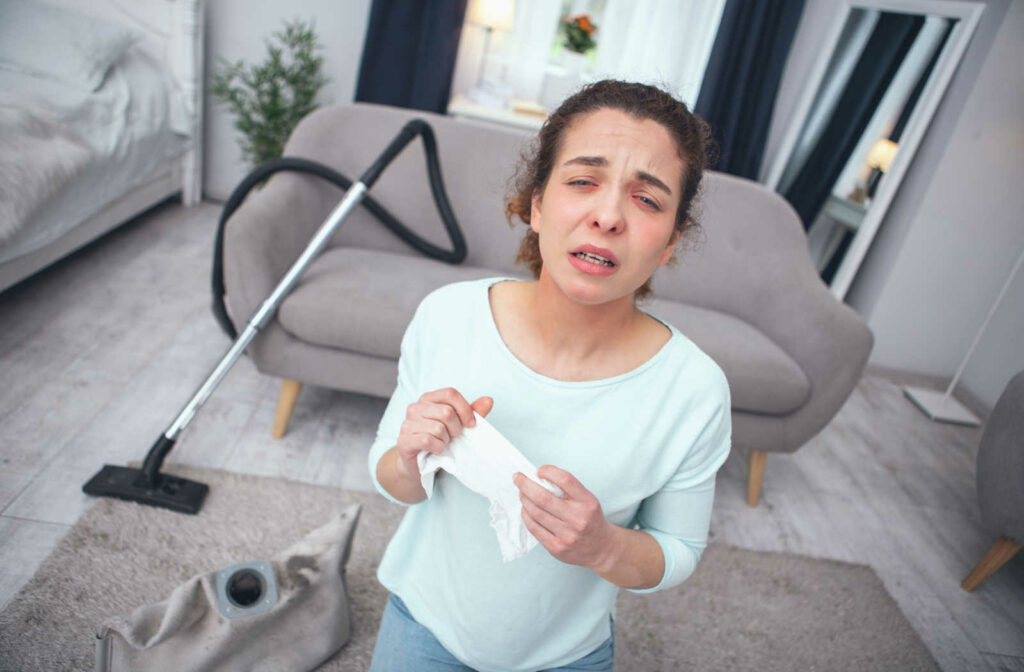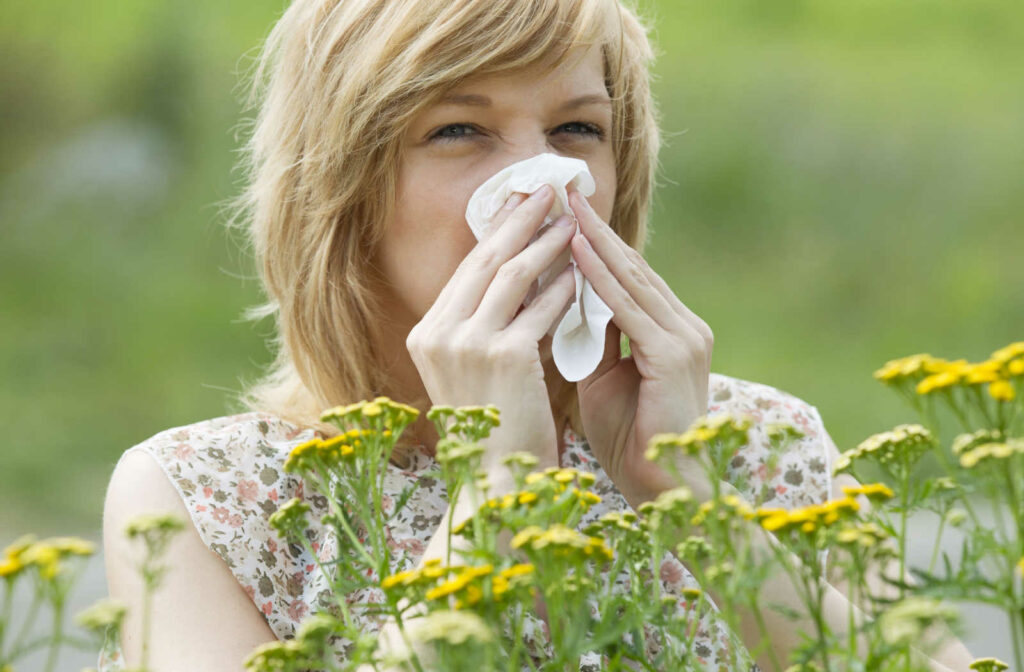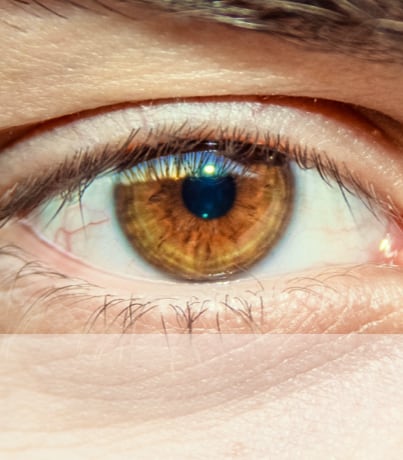While dry eyes and eye allergies were once thought of as separate conditions, data has shown there is a seasonal link between allergies and dry eyes.
Researchers have found 3 interesting details linking seasonal allergies and dry eyes:
- Both pollen levels and dry eye cases reach a yearly peak in April
- Seasonal spikes of dry eye disease occur in both spring and winter
- The prevalence of dry eye disease is lowest during summer
Although dry eyes and eye allergies do share some similarities, it’s also important to note the differences, particularly in their causes.
Treating the underlying cause of ocular conditions is just as important as treating the symptoms, which is one reason why seeing your optometrist for a comprehensive eye exam is so important for getting the right type of treatment.
What’s the Difference Between Eye Allergies and Dry Eye Disease?
The biggest difference between eye allergies (also known as allergic conjunctivitis), and dry eye disease is their cause. While some causes are shared, like the effects of certain environmental conditions, the root issues that cause them can be different.
Eye Allergies (Allergic Conjunctivitis)
The symptoms of eye allergies are caused by a reaction between your body’s immune system and airborne allergens.
Allergens cause cells in your eye to release histamine and other substances. It’s this immune response that can cause symptoms like redness or watery eyes.
Allergens appear both indoors and outdoors throughout the year, such as when pollen levels are higher during summer or when you’re exposed to more dust and dander indoors during winter.
Some of the most common allergens that activate eye allergies include:
- Pollen
- Dust
- Pet dander
- Smoke
- Mold
Dry Eye Disease
In the simplest definition, dry eye disease appears when your tears do not properly lubricate your eyes. The ability of your tears to lubricate your eyes can be affected by external factors like wind and dry air, as well as the glands of your eyes themselves.
The tear layer of your eye has 3 components: mucin, water, and oil (also known as meibum).
Mucin helps tears spread across your eye, and oil helps stop your tears from drying out too quickly. Water is responsible for keeping your eyes lubricated, free of debris, and free from infections.
Two of the glands responsible for creating these substances in your eye—lacrimal glands and meibomian glands—can develop issues that lead to dry eye disease.
What Are the Common Causes of Dry Eye Disease?
Poor Tear Quality
Your tear quality can be considered poor when your eyes lack mucin, oil, or both. Low levels of mucin can stop tears from fully spreading across your eye, and low levels of oil may cause your tears to dry up too quickly, both of which can lead to dry eye symptoms.
Low levels of oil in your eye can be related to meibomian gland dysfunction, which can be caused by a variety of factors that include:
- Bacterial infections
- High cholesterol
- Inflammation
- Eye damage
- Autoimmune diseases
- Other eye diseases

Low Tear Volume
Your lacrimal glands are also responsible for creating tears. Swelling and other issues around your eyelids can affect those glands and result in low tear volume.
Other factors can also influence your tear production, such as simply not blinking enough when working at a computer or looking at a screen.
Some of the common issues that lead to low tear volume include:
- Digital eye strain
- Aging
- Dry air
- Wind
- Interactions with medications
- Other medical conditions, such as diabetes
How Do Optometrists Treat Dry Eye Disease?
Learning about how optometrists treat dry eyes can help you understand what to expect when you visit your optometrist for dry eye treatment. Your eye care team can also answer any questions you may have about dry eyes during a comprehensive eye exam.
BlephEx
BlephEx is an in-office treatment for dry eyes. During the treatment, a medical sponge is used to clear away bacteria and debris from your eyelids that can cause conditions like meibomian gland dysfunction and blepharitis.
Eyelid Cleansers
Your eye doctor can recommend eye cleansers and cleaning pads that can be used to clean away excess oil, debris, and pollen from the areas around your eyelids. Keeping your meibomian glands clear by cleaning your eyes can help reduce dry eye symptoms.
Meibomian Gland Expression
Your optometrist can express blocked meibomian glands to help them open and release oil. This may be done during an eye exam or over several visits to promote prolonged oil production in your eyes.
Additional Treatments and Strategies
There are many extra treatments and strategies that can help relieve dry eye symptoms and stop them from returning, such as changing your diet or using eye drops.
If your symptoms are related to digital eye strain, you may find relief from the 20-20-20 rule. When you’re working at a computer, taking a break every 20 minutes to look at something 20 feet away for 20 seconds can help relieve eye fatigue and other symptoms of digital eye strain.
Visit Bettner Vision for Dry Eye Treatments
At Bettner Vision, we provide comprehensive, personalized eye care based on a multifaceted approach that includes technology, global research, and taking the time to get to know you better.
Book an appointment with us today to speak with our optometrists about dry eyes.







